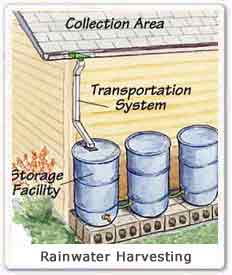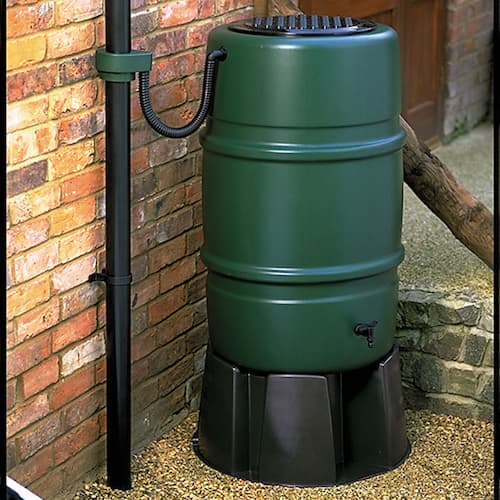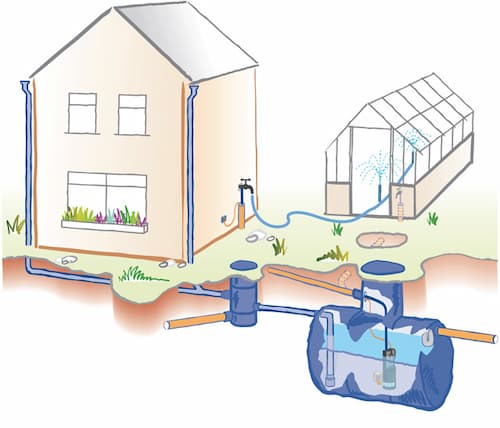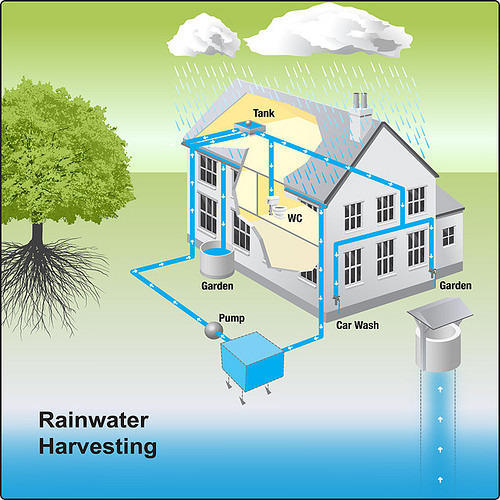What Is Rainwater Harvesting?
Important Point
Rainwater harvesting (RWH) is the collection and storage of rain, rather than allowing it to run off. Rainwater is collected from a roof-like surface and redirected to a tank, cistern, deep pit (well, shaft, or borehole), aquifer, or a reservoir with percolation.
Rainwater Harvesting Methodology:
There are various methods that are available for rainwater harvesting, those are:
- To design a rainwater harvesting system at first collecting the rainwater and subsurface water in a hygienic way.
- In large areas, water availability is more, increase inplantation.
- Stormwater harvesting helps both sides of structures. Stormwater hazards cities but they help to fill the groundwater level by 8 to 10 times compare to the normal process.
- Rainwater harvesting technology requires a hydrogeological study for location and design. Zones are separated by different rainfall types.
- What Is Sewerage | What Is Storm Drain | Household Drain Systems | House Drainage Parts And Components | Types of Sewer Pipes | Sanitary Pipework
- Water Tank Company Names
Types of Rainwater Harvesting Method:
Types of Rainwater Harvesting Method are as follows.
- Water Butt.
- Gravity Only.
- Indirect Gravity.
- Direct Pumped (Submersible).
- Direct Pumped (Suction).
- Indirect Pumped.
1. Water Butt:
This water butt technique is one of the basic methods of harvesting. In this method, water collects from a rainwater pipe or a container by natural rainfall to use only for watering for the plants in the garden.
Reasonable size garden users will see the reduction of the main water used. If you add a rainwater filter with the rainwater tank, you will get a better-harvested rainwater quality.
2. Gravity Only:
In this system, no other instrument is required; it just functions by gravity. In this rainwater is collected from the roof. This is only applicable in those areas where the storage tank is located at a higher level.
Here, only gravity power is needed to supply various places.
3. Indirect Gravity:
In this type, harvested water is first pumped out to a higher-level tank then it allows to supply to a lower level by gravity. In this process pump is worked only when the upper tank required water.
4. Direct Pumped (Submersible):
This is the most common type of professional rainwater harvesting process and it’s the easiest process to install. The pump is set in the underground tank, and the harvested water is directly pumped.
If the tank is going to running out, a little amount of the main waiter is fed to it. In commercial projects dual pumps are used.
5. Direct Pumped (Suction):
In this system, the pump is not set in the tank, it’s set in a utility room. It acts as a backup for the main water.
6. Indirect Pumped:
This is similar to indirect gravity, but here the tank is located at any level of the building because it does not require gravity for supply. Nowadays, booster pumps are installed to maintain the flow and pressure of water thoroughly in the building.
Also, Read: What Is Cross Drainage Work | Types of Cross Drainage Works | Syphon Aqueduct
Rainwater Harvesting Project:
Design and Feasibility of Rainwater Harvesting System for Raj Nagar, Kavi Nagar, Kamla Nehru, or Panch Lok.
Aim of Rainwater Harvesting Project:
Design and feasibility of rainwater harvesting system for Raj Nagar, Kavi Nagar, Kamla Nagar, or Panch Lok.
Objective of Rainwater Harvesting Project:
- For calculation of rainfall discharge.
- For determining the rainfall characteristics of the area.
- For knowing the relation between groundwater and the rainwater potential.
- Each zone and each land use has required a design prototype to placed the different types of recharging structures.
- To calculate the runoff water of differents colony that’s area is used for the project.
Study Area for Rainwater Harvesting Project:
- The total area of these four places is around 10 sq km.
- There is a park in every 1-1.5 sq km.
- This area is mostly locality.
- To know the water level and soil strata we made holes and found the groundwater level up to 35 m.
- Near the park mostly done.
Soil Condition and Climate for Rainwater Harvesting Project:
- The soil conditions of those areas are silty sand and loamy soils.
- During summer and winter, the temperature is extreme and dry.
- The temperature in summer is 22 to 42° C or winter is 6 to 26° C.
- The limited during months June to September there is average rainfall is 732 mm.
Quality of Groundwater for Rainwater Harvesting Project:
- The respect of all constituents expected for total hardness and nitrate the groundwater should be suitable for drinking and domestic uses.
- In the groundwater has not been detected the arsenic content.
Ways of Harvesting Water for Rainwater Harvesting Project:
- Collecting runoff water from roads, roofs.
- Collecting the water from the local catchment.
- For domestic or agricultural purposes conserving water from the watershed management Is used.
- From the local stream capturing the seasonal floodwater.
Need of Rainwater Harvesting
- Nowadays rainwater harvesting is very essential for us.
- Because the ground level water belongs very down from the ground.
- So the requirements are not full fell of us with the groundwater.
- That happens for the domestic abuses of water and the industrial abuses of water.
Also, Read: Basic Plumbing System | Drainage System | Supply and Drainage Subsystems
Rain Water Harvesting Project
Rainwater harvesting is the simple collection or storing of water through scientific techniques from the areas where the rain falls. It involves the utilization of rain water for domestic or agricultural purpose. The method of rain water harvesting has been in practice since ancient times
Types of Rainwater Harvesting
There are three main types of rainwater harvesting systems: direct pumped, indirect pumped, and indirect gravity. In certain situations, it may be possible to have a pure gravity system; though such occasions are rare.
- Water Butt
- Direct-Pumped (Submersible)
- Direct-Pumped (Suction)
- Indirect Gravity
- Indirect Pumped
- Gravity Only
Rainwater Harvesting Methodology
Broadly there are two ways of harvesting rainwater, namely; surface runoff harvesting and rooftop rainwater harvesting. Rainwater harvesting is the collection and storage of rain for reuse on-site, rather than allowing it to run off. The stored water is used for various purposes, such as gardening, irrigation, etc.
Methods of Rainwater Harvesting
- Surface Runoff Harvesting. In urban areas, rainwater flows away as surface runoff.
- Rooftop Rainwater Harvesting. It is a system of catching rainwater where it falls. .
- Catchment.
- Transportation.
- First Flush.
- Filter.
- Storage of Direct Use.
- Recharging Groundwater Aquifers.
Like this post? Share it with your friends!
Suggested Read –
- Difference Between Tied Column and Spiral Column | What Is Spiral Column | What Is Tied Column
- What Is Soil Vent Pipe | How Does Soil Stack Pipe Works | Soil Vent Pipe Material | Types of Plumbing System
- What Is Tie Beam | Tie Beam Details | Advantages of Using Tie Beam | Tie Beam Reinforcement | Why Are Use Concrete Tie Beam
- Emulsion Paint Vs Oil Based Paint | Purpose of Providing Paints | Properties of Good Paint | Properties of Good Paint | What Is Oil Based Paint
- What Are Weep Holes | Need for Weep Holes | Foundation Weep Holes | Types of Weep Holes | Weep Holes In Retaining Wall | Window Weep Holes
- What Is False Ceiling | Why We Need False Ceiling | Types in False Ceilings | Advantages & Disadvantage of False Ceiling | False Ceiling Installation Steps by Step
- What Are Plastic Roads | How to Make Plastic Roads | Who Invented Plastic Roads | First Man-Made Plastic Road | Advantages & Disadvantages of Plastic Roads
Originally posted 2021-06-23 18:54:59.








Leave a Reply